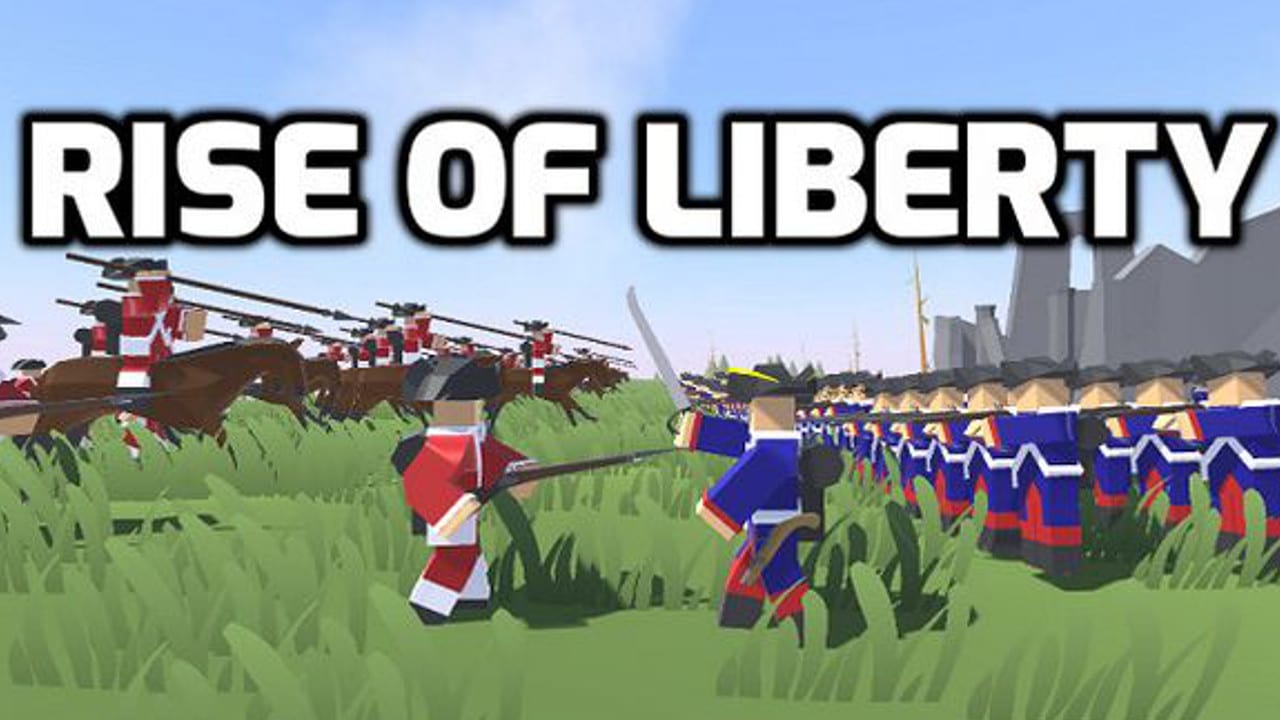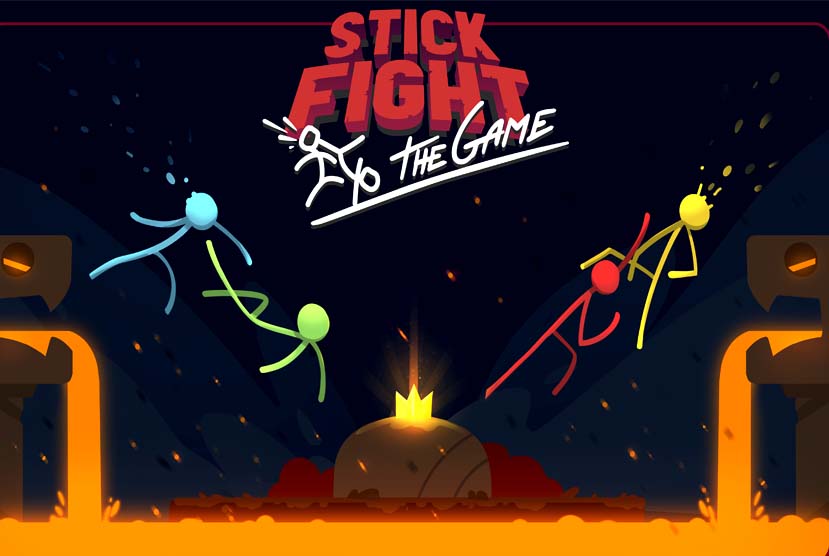On March 9, 1836, Sen. Calhoun rose, not for the first time, to sing the praises of human bondage. Two months earlier, an Ohio senator had presented a pair of petitions sent by citizens of. Rise of liberty is a first person shooter where you fight along side your fellow soldiers in massive battles with thousands of men! ROL has many Real-Time-Strategy and Battle Simulator and First Person Shooter characteristics! This game has the best.
Title: Morkredd-CODEX Genre: Action, Puzzle Developer: Hyper Games Publisher: Aspyr Release Date: 11 Dec, 2020 Languages: English, French, Italian, German, Spanish, Etc File Size: 2.98 GB / Single Link Compressed Mirrors: Dropapk, Google Drive, Mediafire, Pixeldrain, Uptobox, Torrent. Free Download Morkredd PC Game – Morkredd is a tense, physics-based co-op puzzle game for one to two. As temperatures rise, the Statue of Liberty could fall from global warming. (Todd Maisel/New York Daily News) The statue is built to survive winds of 150 mph, but could still suffer its downfall. Water coursed down the stairs from the cracked roof. Photo credit: Author provided. No other city allows one that kind of liberty and brazen beingness but Mumbai does. The rise of Uddhav.
Mini Metro London at Cool Math Games: Your goal is to build London the world's best subway system. Grab your maps, lay some track, and get to work! Mini metro switch.
The story of Miami begins in the early 1800s, but the story of Liberty City doesn’t start until almost a century later — a pattern of disconnected and delayed development that would continue to shape the neighborhood to today.
Until 1937, the area we call Liberty City was mostly undeveloped land owned by whites, according to Dr. Paul George, historian at HistoryMiami. At the time it was too far away from Downtown Miami and Coconut Grove, where population was booming.

In the still segregated Miami, most black residents lived in what was called the “Central Negro District,” today known as Overtown. But by the 1930s Overtown had become overcrowded.
“As Overtown grew, row upon row of crowded, ramshackle houses sprang up along the district’s dusty unpaved streets,” reads “Black Miami in the Twentieth Century,” a book by sociologist and former Liberty City resident Marvin Dunn. There was little running water, no indoor plumbing, and Overtown remained in the dark as electricity increasingly lit up white Miami.
By 1933, just months after President Franklin Roosevelt was elected into office, Miami attorney John Gramling was pushing for the development of another “negro colony” on 120 acres of land on Miami’s northern outskirts. Gramling’s intentions weren’t entirely altruistic — among his main concerns were that diseases like tuberculosis, which flourished in the squalid conditions, would spread into the homes of the white people who employed blacks as servants.
“From this cesspool of disease the white people of Greater Miami draw their servants,” he wrote in one correspondence, documented in an article by George and sociologist Thomas K. Peterson.
At the same time Father John Culmer, a civic leader and minister of Saint Agnes Episcopal Church, was leading a campaign to improve sanitation and housing in Miami’s black neighborhoods.
This campaign, followed by a series of articles in The Miami Herald about the deplorable living conditions in Overtown, prompted a flood of federal dollars into what became known as the Liberty Square Housing Project. This is where the story of Liberty City, which played on big screens across the country this year in the award-winning “Moonlight,” begins.

Liberty Square housing project
Construction began on the 753-unit public housing apartment complex in 1934, and in 1937 the Liberty Square housing project opened. It attracted what were considered middle-class black families who could afford both the expense of a move and the rent in Liberty Square which, although subsidized by the government, was still higher than some nearby properties.
“The early residents were hardworking, upwardly mobile domestics and laborers,” read George and Peterson’s article.
“In six of fifteen files of the early couples, the reasons for eventually leaving Liberty Square was the purchase of a home or an income level which exceeded the allowable maximum.”
In order to separate the blacks living at Liberty Square from the the few whites living nearby, planners built a “race wall” along NW 12th Ave, stretching from NW 62nd St to NW 71st St. Part of it still stands today.
The word “liberty” was often attached to black communities at the time, as were presidents’ last names – a way to instill pride in the community.
Before the housing project was built, the neighborhood didn’t really have a name. Dunn, for example, lived in Opa-locka as a kid in the 1950s, and remembered busing into the area we call Liberty City today to go to school because of segregation. Back then it had no name.
But soon after, a neighborhood began to form around the housing project. And as more black families moved in, the few remaining white families moved out.
While there’s still some fuzziness about where Liberty City begins and ends, Dunn defines it as the area between 42nd and 79th Streets, bounded by I-95 on the east and 27th Avenue on the west. While the Liberty Square housing project remains the most defining physical structure, black churches like the Church of Open Door and the Saint Agnes Episcopal Church and schools like Miami Northwestern and D.A. Dorsey Educational Center also characterize the neighborhood today.
Integration, crack, and concrete monsters
In the 1940s Liberty City was in its heyday. New homes sprung up alongside the new housing project.
The Liberty Square housing project was supervised by Captain James Scott, a black army officer who served in World War I.
“He ran it like a military camp, it was spotless. He took responsibility and could throw people out. There was no ruckus, and he did throw people out,” Dunn says.
By the 1950s it was a “pretty ideal black community.” Black families were moving in, attending church, and building a community.
But then, according to Dunn three things happened: integration, the crack epidemic, and a burst of absentee landlords.
In the 1960s integration began allowing blacks to move into neighborhoods previously off limits (although redlining kept some parts of the city de-facto segregated). Many of those with money left Liberty City to buy homes in, for example, Miami Shores. That began the drain of economic and intellectual resources, which accelerated the second part of the downfall: the spread of crack and the crime that followed. The cheap, highly addictive drug swept through the community.
Finally, the construction of concrete monster apartment buildings, “stacking blacks on top of each other in crude buildings almost none owned by black people,” left properties crumbling and the people in them living in squalor, without any investment in maintaining them.
Rise Of Liberty Cracked
“It was white investors buying up land in Liberty City, investing in apartment buildings and renting to blacks, then just walking away,” Dunn explained. “They became so rundown no one could live in it.”
The McDuffie Riots
Then on Dec. 17, 1979, at 1:15 a.m., Arthur McDuffie, a black insurance agent, was riding his motorcycle when he passed a police officer who said he ran a red light. He was chased and finally stopped at North Miami Avenue and 38th Street. He was beaten into a coma by at least six white officers and died in the hospital four days later.
Five months later, four of the officers on trial were acquitted by an all-white jury in Tampa. When news finally reached Miami, people in Liberty City were livid. A protest was organized and within hours, it turned into a riot. Police cars, government buildings, and businesses were set on fire. Hundreds of businesses were looted and destroyed. When the three days of rioting finally ended, the neighborhood was destroyed. Damage exceeded $100 million.
“A lot of people couldn’t understand why black people were burning down their neighborhood,” Dunn said. “It was not their neighborhood — they never owned the land or the buildings or the businesses.”
Post-riot Liberty City stagnated. By the 1990s, it was “flatlining,” according to Dunn.
“There were attempts to rebuild the business plaza at 62nd Street at 27th Avenue, but the stores remained empty,” Dunn said. “That was going to be the hub that would bring the community back, but white people [were] afraid to go into Liberty City.”
This is the period of time depicted so vividly in “Moonlight,” and when playwright Tarell Alvin McCraney and director Barry Jenkins were growing up in the neighborhood.
The “Moonlight” effect
That lack of any patronage from other parts of Miami has continued to stifle growth today.
But that’s what T. Willard Fair, president of the Urban League of Greater Miami, thinks needs to happen to help Liberty City thrive.
“We’re trying to get to people to move back in. You can’t change a community of poor people living next to poor people. Children have to see poor people living next to other folks. Liberty City is not the real world,” Fair said.
Fair, whose nonprofit provides human services in the neighborhood, moved to the area in 1963 at 24 years old and became the youngest executive in the history of the Urban League movement.
“It was my first job and only job I’m going to have in this life,” he said with a smile.
“We believe that what’s broken in Liberty City can only be fixed by folks who live here. The foundation is … failing schools,” he said.
“[Failing] schools are representative of the fact that there is no value placed on education … until there is a restoration in importance of education, the Liberty City that comes up in your mind — one of chaos and dependency — will be there.”
And while the Academy Award-winning “Moonlight” put Liberty City on the map this year, Fair isn’t impressed.
“You think that movie is going to get people to look and care about Liberty City?,” he asked. “[After] the worst riot in the nation … did not move the community?”
While Moonlight showed that a boy from Liberty City could still go on to teach at Yale or win the Academy Award, Fair isn’t ready to celebrate when there are hundreds of “black boys who have been eaten up … who went off to prison who have no tomorrow who dropped out of school.”
“Please don’t think this is going to do anything about changing the quality of life, about what happens in these schools in Liberty City that are all failing.”
“When [Moonlight] becomes the norm, then we’ll celebrate. I’ll lead the parade.”
PC Keyboard Controls
Rise Of Liberty Cracked
How to Play
Basic Controls
W, A, S, D – Movement
R – Reload
X – Melee
F – Interact
Change – Sprint
Alt – March
M – Map
Q/E – Up/down in Spectate
Right Mouse Click – Aim
Left Mouse Click – Shoot
ESC – Bring Up Menu
T – Slow Motion
Rise Of Liberty Cracked
Squad Commands
4 – Add nearby men to squad
5 – Hold position
6 – Stop and Fight
7- Spread out
8 – Go to point
Spawning on Soldiers
While in spectate modelook at a friendly soldier from under 10m away and press ”F”.
Capturing Points
Each that your team has captured will earn you more points.
The first team to 1000 points wins or if you eliminate all enemy soldiers.
